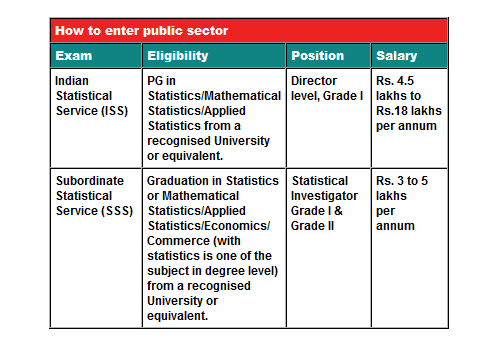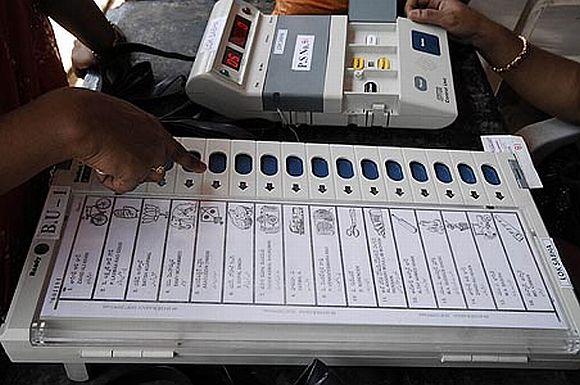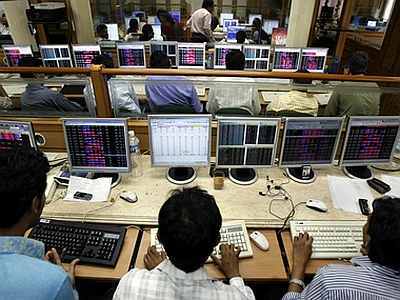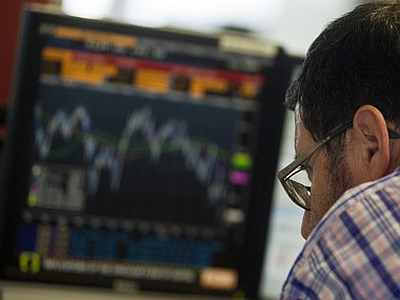 | « Back to article | Print this article |
A career in statistics: Giving life to numbers
Statistics is more applied than mere Mathematics, and has the potential to impact many lives. A statistician's role is to give life to data, literally.
FAST FACT
Programmes: Bachelor in Statistics, Master in Statistics
Top institutes: Indian Statistical Institute (Kolkata, Delhi, Chennai, Bangalore), IIT (Kanpur, Mumbai), CR Rao Institute of Advanced Statistics (Hyderabad), Centre for Advanced Studies (Pune University), Indian Agriculture Statistics Research Institute (Delhi), National Institute of Medical Statistics (Delhi), International Institute of Population Studies (Mumbai)
Position: Analyst, Biostatistician, Business Statistician, Marketing Analyst, Data Analyst, Data Scientist, Quantitative analyst, Professor, Teacher
Work area: Public and Private (all sectors)
In bustling supermarkets like Big Bazaar and Reliance Fresh, you will notice cashiers hurriedly scanning all products purchased by customers.
This digital data if analysed correctly, can help companies make profit.
This is where a statistician steps in, mining through voluminous data records.
"My data analysis helps companies to take right marketing strategy to boost revenue," explains Sourish Das, statistician at SAS Research & Development, who works with various clients.
Become an analytical expert
A statistician's role is to give life to data, literally. Using statistical methods, he or she interprets numerical facts and creates valuable information backed by summary of data and findings.
He translates numbers into knowledge. For instance, in medical science -- how do we know that a particular drug is successful or not, or how many people smoke?
Statistics is a field which helps us to differentiate. It substantiates your findings and helps you state results, objectively.
"Statistical analysis is like gospel for decision making for research, industrial planning or policy formulation," emphasises Prof Satya P Das, Head, Indian Statistical Institute, Delhi.
Click NEXT to find out how you can pursue a career in statistics....
'Our students' maximum salary is close to 15 to 18 lakhs per annum'
Most students link Statistics to Mathematics and computation.
In reality, the job of a statistician is more applied than mere Maths, their work can be applied across a wide spectrum.
"Statistics is not like Chemistry or Physics where one works to solve his/her own subject problem.
On the contrary, Statistics solves the problem of other subjects," says Prof. Rajendra Prasad of the Indian Agricultural Statistics Research Institute (IASRI).
Typically, statisticians interact with people from other disciplines, and give a sense of clarity to their analysis.
"Many agricultural scientists come to our institute with collective data for solutions. For them research without statistical inference is like taking medicine without a doctor's prescription," Prasad quips.
With a Statistics degree, one can work in a range of fields from economics and finance, to IT, manufacturing and agriculture.
Here, Prof Satya P Das, head, Indian Statistical Institute, Delhi tells us what it takes to pursue a career as a statistician.
What's so exciting about Statistics?
Students think Statistics is all about mean, median and mode. But there are two kinds of joy for statisticians -- those who are into hard core research are involved in discovering methodology by using various formulae.
And it gives lots of excitement. The other happiness is data speaks more than words -- you can confidently prove your argument!
Which is tougher-pure or applied statistics?
If you know your methodology well, which is part of pure statistics (mathematical), then you can apply statistics anywhere -- be it economics, agriculture, science, demography, sociology.
Applied statistics is used for practical purposes. For instance, statistics is applied to understand socio-economic realities -- like which countries are prone to terrorism?
Which country is poor, rich, religious? You have to think what kind of strategy is to be used to capture statistics of a particular subject.
At ISI, we believe that the fundamentals of theory must be very strong.
What about placements?
Major recruiters are from finance and banking sector -- Morgan Stanley, Axis Bank, ICICI Bank and research firms like Goldman Sachs, McKenzie hire students for various analytical position. A lot of investment companies are also zeroing in on postgraduates.
Our students' maximum salary is close to 15 to 18 lakhs per annum.
Although government sector have a range of opportunities, salaries are low. So most students are inclined towards the private sector.
Find jobs across sectors
Medicine
As Director of Biostatistics & Statistical Programming, INC Research, KV Palanichamy's role is to lead the team of statisticians to analyse and interpret data in the field of clinical research.
He tries to answer scientific questions by determining sampling techniques and discusses about variables to be measured.
"After the analysis of a particular drug, it gives me immense joy if that particular drug reaches market, enhances the quality of life and the company gets profit," shares Palanichamy.
Education
RU Chowdhary, Senior Statistical Officer at HRD, Higher Education Dept builds a database, and assesses the condition of higher schools in the country.
Data analysis ranges across areas like drop-out and enrolment ratio of each state to problems like sanitation, water and electricity problems commonly faced by schools.
Chowdhary's work doesn't require him to travel and he receives secondary data from various boards.
"We adopt various statistical techniques to measure performance of private and public schools, and gauge growth of student learning," he shares.
Agriculture
A statistician can play a major role in transforming India from a food deficit to food surplus state.
Ask Eldho Varghese, Scientist at IASRI on what excites him about agricultural statistics and he responds, "My findings give confidence to farmers to determine which crop varieties or fertilisers will give better yields than others."
At IASRI, Varghese evolves sample survey techniques for various parameters to analyse agricultural data.
Information Technology
"Numbers tell the story," shares Sunil Kumar, Forecast Analyst at HP, who toys with his mining software to extract some keywords from the customer-filled survey, and screens comments like "Agent was not technically strong or communication skill of agent was poor".
His job is to make sure that customers get enough support as soon as they contact the support centre.
"My role is to identify why a customer is not happy about the services, and directly hit the root cause of problem," he shares.
Eligibility, Institutes and more...
A Class 12 science student is eligible to pursue Statistics.
Typically, all traditional universities offer statistics from the UG level.
But the Indian Statistical Institute (Kolkata, Delhi, Chennai, Bangalore), is considered to be the most prestigious.
Students must appear for a written test to for selection to B.Stat (Hons) or M.Stat programmes. There are two kinds of statistical knowledge one can acquire: pure or applied statistics.
Colleges primarily focusing on pure statistics (theoretical inclination) include ISIs, IIT (Kanpur, Mumbai), CR Rao Institute of Advanced Statistics (Hyderabad), Centre for Advanced Studies (Pune University).
Others like IASRI (Delhi), National Institute of Medical Statistics and International Institute of Population Studies focus on practical application of Statistics in various fields.
The faculty-student ratio at IASRI is remarkable, "We have 40 faculty members teaching 10 students.
Students selected through All India exam get fellowships of Rs 7,560 (MSc) and Rs. 10,500 (PhD) per annum.
Hostel fee is nominal which costs Rs. 150 to 200," says V. K Bhatia, Director, IASRI.
Further studies
A Master's or PhD degree lends more credibility and are preferred for specialised jobs.
Sayani Gupta, second year M.Stat student at ISI explores subjects like advanced probability, quantitative economics, applied statistics, biostatistics, data analysis, mathematical statistics and actuarial science.
Along with the institute's compulsory project under CSO, Sayani's first industry interface internship at HCL Technologies is close to her heart.
"HCL had no statisticians. We supported the team by adopting different methods to arrive at conclusions.
They evaluated us to see whether our analysis matched with their idea," shares Sayani who won their confidence.
She received a stipend of Rs 12,000.
Price forecasting excites Bishal Gurung, a PhD (agriculture statistics) scholar at IASRI.
"I am working on a model on how to arrive at conclusion to forecast commodity prices of vegetables which will help both layman and government to take better decisions," he explains.
Choose between Public and Private sector jobs
Public sector jobs
India has 97 institutes under Indian Council of Agricultural (ICAR) and 45 agricultural universities.
Yet, awareness of job opportunities is low. "Last year, ASRB advertised 70 vacancies for statisticians.
Unfortunately those from pure statistics were unaware of such opportunities," discloses Dr Bhatia.
To join the govt sector, one can appear for Agriculture Research Service (ARS) or Indian Statistical Service (ISS) through Agricultural Scientists Recruitment Board (ASRB) and UPSC, respectively.
ISS offers attractive openings for postgraduate statistic students in the govt sector, and its exam is conducted by UPSC.
"Once you crack it, you can join National Statistical Organization, Central Statistical Organization (CSO) and National Sample Office", shares Rashmi Verma, Assistant Director, CSO, which is accountable for statistical activities in the country from National Income Accounting, Economics Census, Human Development to National Industrial Classification.
"They come under the ranks of group "A", Class I officers.
The take home salary at the time of joining is Rs 4.5 lakhs per anum and reaches above 18 lakhs with experience," she shares.
At agricultural universities, they join as Class I Scientists in pay band 3 of Rs 45,000.
Sandeep Kumar Sadhu, ISS 8th rank holder (2011) tips us off, "75 per cent of the paper covers your subject. For rest, along with GK, one can brush up on demography and quality control topics."

Private sector demand
MA, PhD pass outs from top institutes will find jobs in public organisations, top-notch MNCs, private companies.
"With starting salary of Rs 5 to 6 lakhs, my students are hired in companies like HP, Infosys, HSBC, GE; UN bodies -- ICARDA, ICRISAT," shares Bhatia.
Top challenges
The quality of the data is crucial. Sunil's basic challenge at work is getting unbiased data.
Your ability to understand real life problems statistically and choose the best tool available in short span, is important.
"You must know mathematical theories of statistics inside and out," says Palanichamy.
The scope in this field is immense if one has a flair and works hard to develop all the necessary skills.
It's quite possible that the profession becomes one of the highest paid in the coming decades.




